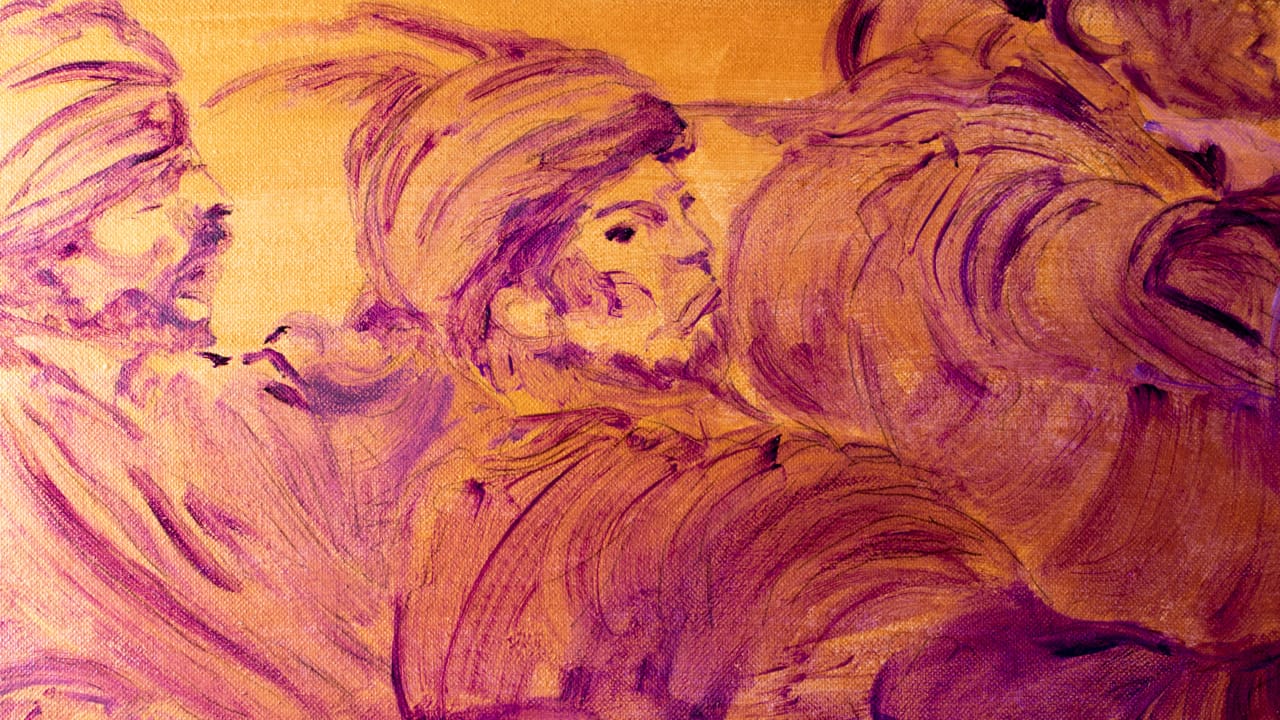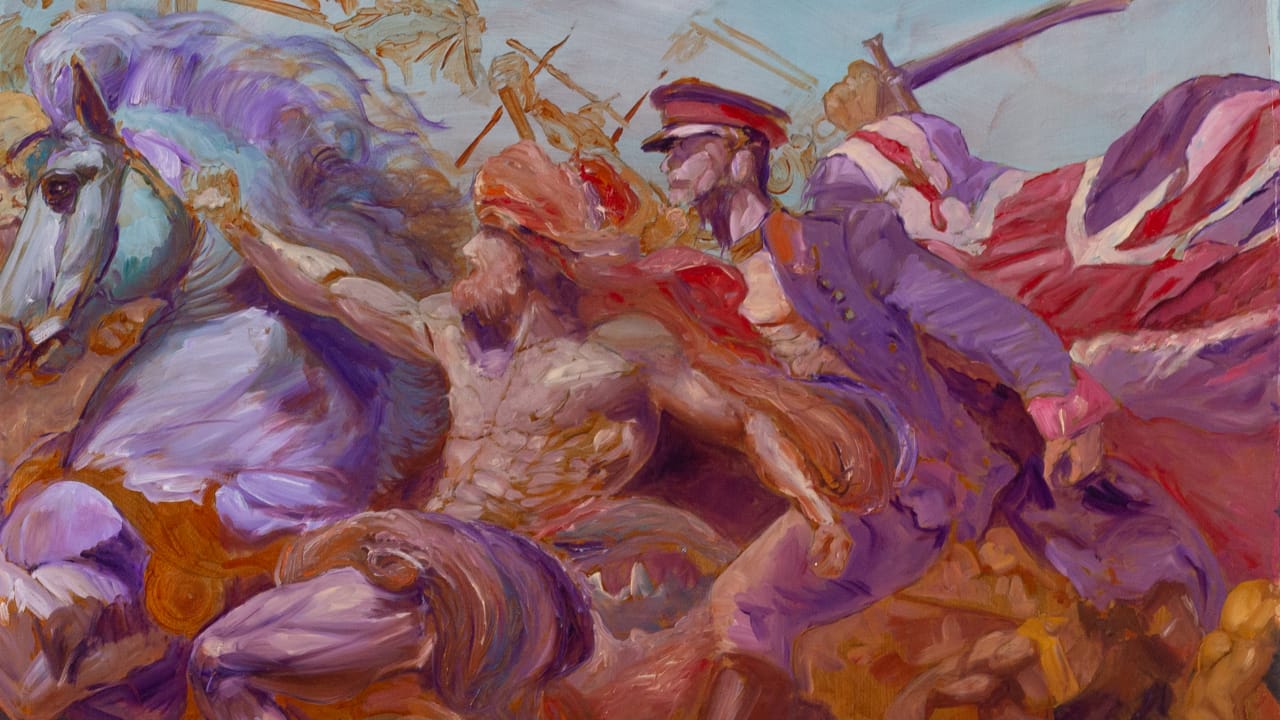What happens when the human form becomes a battleground, constrained by enduring strife and shrouded influences? Conceptual polymath Rajinder Singh explores this burning question through his stimulating work across brushwork, installations, still imagery, and physical enactment. Working from his studios in Dublin and London, Singh’s practice typically pivots around ritual actions and how they affect the architecture of social bodies amidst tangible and figurative thresholds. “Growing up, I remember Ipoh as a place that nurtured my education. It allowed me the freedom to explore and become, doing so with a certain carefree spirit that I appreciate now. Now, I live in London—a city that espouses all my values and politics,” Singh says. “It makes me want to be a better person, to respond to the call of activism, and to make the world a better place for all.”

Since leaving home at the age of 20, Singh returns to Kuala Lumpur once a year during his summer holidays. However, he has noticed that discussions in the city often revolve around pragmatic matters such as financial stability, family obligations, or career progression. He finds that exposure to different viewpoints and philosophical debates is somewhat muted, as conversations here tend to favour politeness, indirectness and consideration of communal harmony. “London excites my mind, while Kuala Lumpur feels like a warm hug. They’re simply different. I’m living away from home, creating art about home, in a world that provokes my curiosity and challenges me to question everything,” Singh says, explaining how these cross-cultural exchanges greatly enrich his artistic workflow.

A familiar collaborator with Wei-Ling Gallery, Singh’s previous solo exhibition in 2022, Saffron Songs, introduced a series of fluid and animated compositions described as ‘large scores’. The collection held personal significance, inspired by sounds that resonated with his culture, community and history. This time around, Singh teamed up with the gallery again to present Saffron Surrender, spotlighting a fresh body of work, consisting of large paintings, sculptures and his poetry volume, Pale in Saffron. Here, Singh grapples with the inheritances of colonialism through three childhood stories from his upbringing in Ipoh—narratives that have been passed down through generations and shared among the Sikh diaspora around the world. He ponders what decolonisation could entail in the Malaysian-Sikh context, viewing it as a path to move beyond acknowledged colonial remnants.

As an observer watching from afar, appreciating artistic repertoire and forming subjective critique may seem straightforward. Without the artist’s backstory, it’s merely an art piece; however, for Singh, a deeper impetus compels him to revisit the past. “My primary drive comes from an underlying rage within me. As an immigrant artist living in London, I come from a country that was once colonised by the British Empire. I’m concerned about how these colonial histories have deeply influenced my world and how they’re currently shaping cultural, political and social landscapes,” Singh says. “Exploring personal and societal histories through my art serves to process our collective experiences of colonialism and its lingering effects. It allows us to learn from past mistakes, develop empathy, and cultivate a deeper understanding of ourselves and the world around us.”

Singh has dedicated years to researching the histories of colonialism within the Malaysian milieu by delving into scholarly works on post-colonial theory. He has worked with historians and academics, documenting much of his grandfather’s heritage in colonised Malaya before it could be permanently lost. Understanding the complexities of our colonial past has been essential for Singh to critically engage with these themes in his work. This intent guided his creative process: “I always start by experimenting with different sets of mediums. I initially explored with abstract ideas for Saffron Surrender, incorporating silkscreen prints of palace windows and Persian carpet designs that narrated stories of violence and pillage.” Many of these early pieces have helped him define how he wanted to approach his work, even though most of them were ultimately discarded or painted over.

“My job as an artist is to depict things that people don’t normally see. I highlight stories and perspectives that have been marginalised, overlooked or suppressed by dominant colonial narratives,” Singh reflects. “But I also want to celebrate our resistance in the face of hundreds of years of trauma. This is why I do what I do. I hope that at least one person would recognise this and reassess our history through a new lens.”
Wei-Ling Gallery operates on an appointment-only basis. For inquiries, appointments, and information on upcoming exhibitions, call +603 2260 1106 or email [email protected].
More photos of Saffron Surrender exhibition
Lead image: A Heavenly Machine







